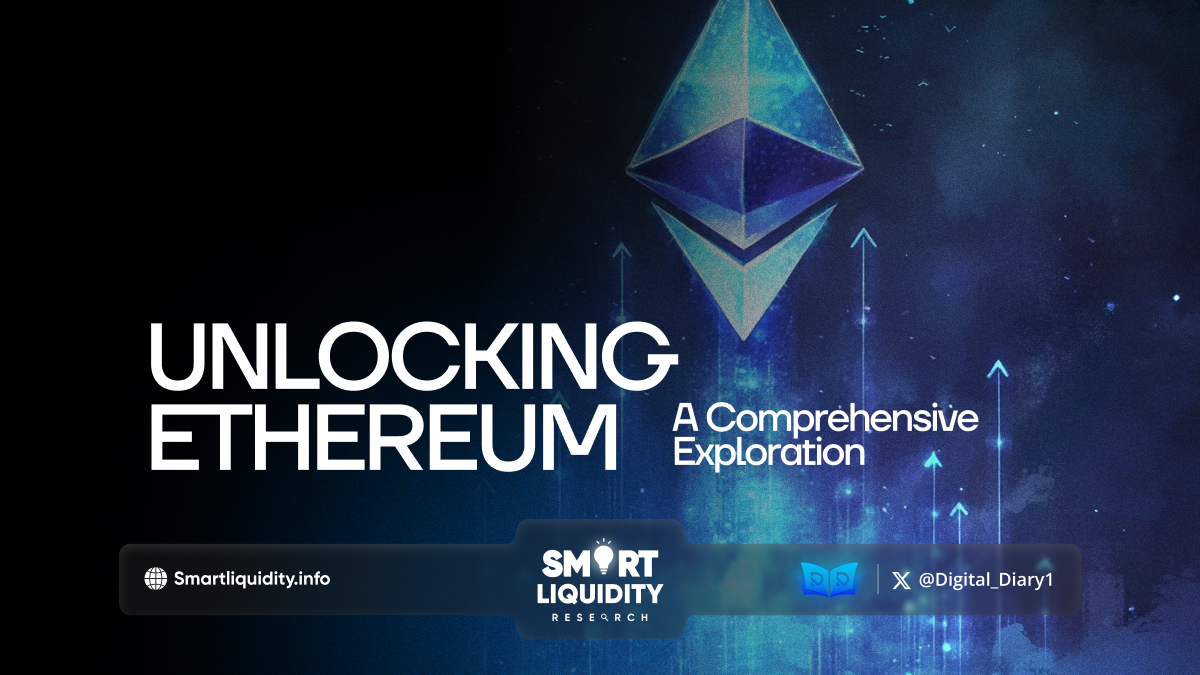Unlocking Ethereum: A Comprehensive Exploration


Ethereum is far more than just a cryptocurrency; it’s a game-changing platform that has redefined the very concept of decentralized applications and smart contracts. It stands as the pioneer of blockchain’s second generation, introducing innovations that have transformed industries and opened up endless possibilities for developers, investors, and even casual users. But what exactly makes Ethereum so revolutionary? Let’s dive deep into the world of Ethereum, unraveling its intricate mechanics and profound impact on the digital landscape.
The Foundation of Ethereum
Created by Vitalik Buterin in 2015, Ethereum set out to build on Bitcoin’s core innovation—decentralized, immutable ledgers—by adding a critical layer of programmability. Unlike Bitcoin, which was designed solely for peer-to-peer currency transactions, Ethereum allows developers to create and execute “smart contracts,” which are self-executing contracts with the terms directly written into code. This opens the door to countless possibilities, from decentralized finance (DeFi) applications to supply chain management, gaming, and beyond.
Ethereum’s blockchain is fueled by Ether (ETH), its native cryptocurrency, which powers transactions, smart contract execution, and network security. The dual structure of Ethereum—a blockchain and a cryptocurrency—makes it a versatile platform for both developers and users.
The Power of Smart Contracts
At the heart of Ethereum’s appeal are its smart contracts. These are not mere documents; they are self-executing agreements coded into the Ethereum blockchain. Once specific conditions are met, the contract is automatically executed without needing a middleman. This has disrupted traditional industries like real estate, legal services, and even banking, where smart contracts are creating faster, more efficient, and transparent processes.
Imagine a world where you could buy a house without the hassle of paperwork, agents, or third-party approval. With Ethereum smart contracts, that world is not only possible, but it’s happening today. Contracts are finalized in minutes rather than days or weeks.
Ethereum’s Decentralized Ecosystem
Another key pillar of Ethereum’s success is its decentralized nature. Ethereum operates on thousands of nodes across the globe, making it resistant to censorship, downtime, and fraud. No single entity controls Ethereum, making it one of the most secure and democratic digital platforms ever created.
This decentralized infrastructure has birthed a host of decentralized applications (dApps) that operate on the Ethereum blockchain. dApps range from financial applications like lending and borrowing platforms (DeFi), to gaming, social networks, and even marketplaces for non-fungible tokens (NFTs). Ethereum’s ecosystem is vast and growing, pushing the boundaries of what decentralized technology can achieve.
The Ethereum 2.0 Upgrade
Ethereum’s growing popularity has led to challenges, most notably scalability and high gas fees. As the network became more congested, transaction costs soared, making it less accessible for everyday users. However, Ethereum 2.0, a long-awaited upgrade, promises to solve these issues.
Ethereum 2.0 introduces a shift from Proof of Work (PoW) to Proof of Stake (PoS), which will drastically reduce the energy consumption of the network while improving speed and scalability. This upgrade will allow Ethereum to handle thousands of transactions per second, making it a more practical and efficient platform for both large-scale enterprises and individual users.
Ethereum’s Role in Decentralized Finance (DeFi)
One of the most groundbreaking movements Ethereum has catalyzed is DeFi, or decentralized finance. DeFi applications aim to recreate and enhance traditional financial systems—such as lending, borrowing, and trading—by eliminating intermediaries like banks. With Ethereum, anyone with an internet connection can access these financial services, democratizing finance on a global scale.
Imagine a world where banking is not dictated by physical locations, governments, or corporations. DeFi on Ethereum offers users control over their own assets, access to high-yield interest accounts, and the ability to trade on decentralized exchanges without the need for permission or trust in a third party.
NFTs and Beyond: Ethereum’s Cultural Impact
Ethereum also paved the way for the rise of non-fungible tokens (NFTs), which have taken the art, entertainment, and gaming industries by storm. These unique digital assets are bought, sold, and traded on Ethereum, allowing artists to monetize their work and gamers to own in-game assets in ways that were never possible before.
From virtual land sales to digital artwork auctioned for millions of dollars, NFTs are transforming how we think about ownership in the digital world. Ethereum’s blockchain ensures authenticity and provenance, making it a vital platform for the NFT revolution.
Conclusion: Ethereum’s Endless Potential
Ethereum is more than just a blockchain; it’s a global, decentralized platform that is unlocking new possibilities every day. Whether through smart contracts, dApps, DeFi, or NFTs, Ethereum has proven that it’s at the forefront of digital transformation. As Ethereum 2.0 rolls out and its ecosystem continues to expand, the potential for this platform seems limitless.
In this rapidly evolving digital age, Ethereum is setting the stage for the future of technology, finance, and beyond. Whether you’re a developer, investor, or casual user, understanding Ethereum means grasping the key to the future of decentralized innovation. The question is no longer if Ethereum will change the world—but how soon.




